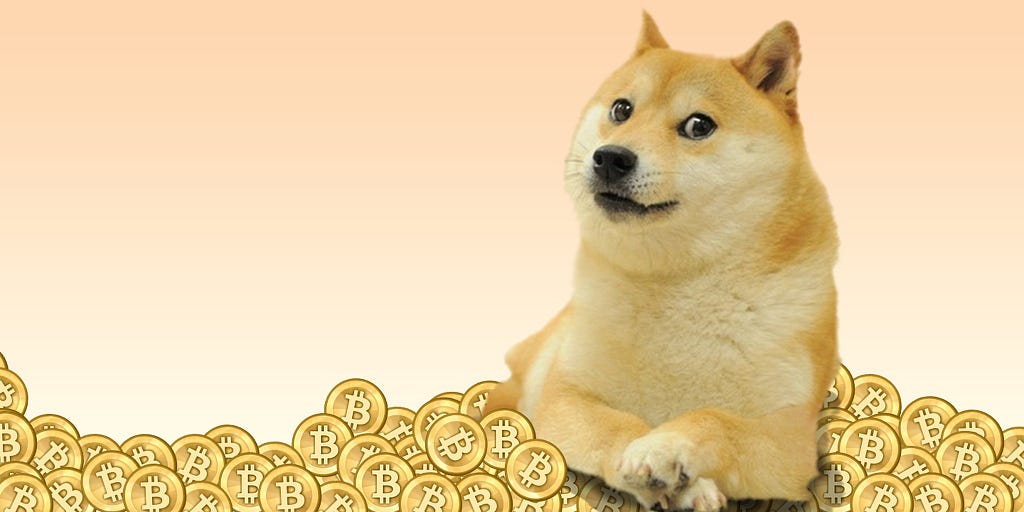Latest news about Bitcoin and all cryptocurrencies. Your daily crypto news habit.

Look, I get it. So many crazy terms are thrown in your face every single day.
Bitcoin. Ethereum. Blockchain. DAO. Decentralization. ICO. Virtual Tokens. Distributed Ledger. Miners. Crypto. Dogecoin?
It’s incredibly overwhelming, and tough to keep up — especially since the technology is rapidly changing every single day.
This post starts from the ground up, and today, I just want to help you answer this:
What is a blockchain? (… And I promise I won’t describe it as ‘a type of distributed ledger — because what the heck is that?)SHA-256: Not M. Night Shyamalan…
You have seen these kind of numbers before — they look something like: 34fe9f09e27cc9057e03d29e5ebde996be2869ac1a412e9188f023165df39e74 (don’t be scared… keep reading). Most of us just peg it down to “computer stuff”.
But it’s so much more than that. It’s a program created by the NSA called Secure Hashing Algorithm (SHA-256). Why SHA-256? Keep reading…
Think of a fingerprint.
A fingerprint is a unique identifier for you. We all know that. In a simplified way, if you put something through this impressive-like SHA-256 program (it could be two words, a 10,000 page essay, an image, etc.), it will give you this so-called “digital fingerprint” (i.e that extra long number I scared you with above). Pretty cool, right?
So, imagine if somebody was messing with that 10,000 page essay that you worked so hard on. To verify it wasn’t changed — you would have to go through all those pages, making sure there wasn’t even a comma out of place. Or… If you had run this original essay through the SHA-256 program, you would have got one “digital fingerprint”, and if someone had changed even a single space — you would have got an entirely different “fingerprint”.
This is a very long way to describe what is known as cryptographic hashing. The hash (not that kind of hash) is the “digital signature”. Which brings us back to your initial head-scratching question: what is a blockchain?
Now that you’re experts in cryptographic hashing, it gets much easier from here.
Let’s start with block. Take a bunch of transactions, and hash them i.e. give that whole ‘block’ of transactions a unique fingerprint! Done.
Chain. You had your first block you just made. Your next block of transactions has the new transactions — plus that hash from the previous block.
Get it? Block — chain (technology is hilarious).
Pretty cool, right? Now you understand what these images are actually saying.
(P.S. It’s near impossible to break that SHA-256 algorithm.)
256 means there are 2²⁵⁶ possibilities
2²⁵⁶=115792089237316195423570985008687907853269984665640564039457584007913129639936… yeah
Bear in mind that a hash is just one way. You can’t take that fingerprint and get that essay back — it just validates it. This means that if someone wanted to change your blockchain, they would have to go back and edit every single thing in each one of your blocks and create them all over… And so it goes on. Trust me, once we go down this rabbit hole — it’s a long, long way down.
This is my first go at explaining this in a simplified manner. If this helped, and was easy to understand, I will write more and we can go down the rabbit hole together! Leave a comment and let me know your thoughts, or what topics keep you up at night — and I’ll write about it.
Here’s a teaser of what’s to come…
- Why Blockchain
- Intro to Cryptocurrencies
- Ethereum & The Tao of the DAO
And much, much more. We live in interesting times!
What the f*** is blockchain anyways? was originally published in Hacker Noon on Medium, where people are continuing the conversation by highlighting and responding to this story.
Disclaimer
The views and opinions expressed in this article are solely those of the authors and do not reflect the views of Bitcoin Insider. Every investment and trading move involves risk - this is especially true for cryptocurrencies given their volatility. We strongly advise our readers to conduct their own research when making a decision.
